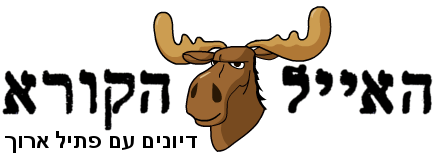בתשובה לאורי, 19/04/03 17:29
 |
|
 |
||
|
||||
 |
על מנת למנוע לזות שפתיים ושאר מרעין בישין, דיוושתי במיוחד על אופני מרחק של ו' מילין עד למשרדי באחה"צ של יום שבת. והרי הרשימה: Rafaeli A. and Klimoski R., “Predicting sales success through handwriting analysis: an evaluation of the effects of training and handwriting sample content”, J. of Applied Psych., 1983, Vol. 68, No. 2, 212-217 רק לאחר שפורסם המאמר הצלחתי לשים את ידי על ספרו של ברוך נבו:Keinan G. et al., “Reliability and validity of graphological assessment in the selection process of military officers”, Perceptual and Motor Skills, 1984, Vol. 58, 811-821 Bornstein Y., “The utility of graphological assessment as a tool in selection process in the Israeli Defense Forces”, 1985, M.A. thesis, University of Haifa Ben-Shakhar G. et al., “Can graphology predict occupational success? Two empirical studies and some methodological rumination”, J. of Applied Psych., 1986, Vol. 71, No. 4, 645-653 Nevo B., “Validation of graphology through use of a matching method based on ranking”, Perceptual and Motor Skills, 1989, Vol. 69, 1331-1336 Edwards A.G.P. and Armitage P., “An experiment to test the discriminating ability of graphologists”, Personal and Individual differences, 1992, Vol. 13, No. 1, 69-74 Nevo B. and Benitta R., “Rand-ordered matching - validity studies utilising qualitative data: A proposed model and some empirical results”, Australian J. of Psychology, 1993, Vol. 45, No. 3, 131-133 Satow R. and Rector J., “Using gestalt graphology to identify entrepreneurial leadership”, Perceptual and Motor Skills, 1995, Vol. 81, 263-270 Bushnel I.W.R., “A comparison of the validity of handwriting analysis with that of the Cattell 16PF”, Intl. J. of Selection and Assessment, 1996, Vol. 4, No. 1, 12-17 Lowis M. and Mooney S., “Examination performance and graphological analysis of students’ handwriting”, Perceptual and Motor Skills, 2001, Vol. 93, 367-381 Russel W.D. et al., “Should we write off graphology?”, Intl. J. of Selection and Assessment, 1996, Vol. 4, No. 2, 78-86 Neter E. and Ben-Shakhar G., “The predictive validity of graphological inferences: A meta-analytic approach”, Personal and Individual differences, 1989, Vol. 10, No. 7, 737-745 Nevo B., “Yes, graphology can predict occupational success: rejoinder to Ben-Shakhar et al.”, Perceptual and Motor Skills, 1988, Vol. 66, 92-94 Keinan G. and Eilat-Greenberg S., “Can stress be measured by handwriting analysis? The effectiveness of the analytic method”, Applied Psych.: and Intl. Review, 1993, Vol. 42, No. 2, 153-170 Rim Y., “Who believes in graphology?”, Personal and Individual differences, 1981, Vol. 2, 85-87 King R.N. and Koehler D.J., “Illusory correlations in graphological inference”, J. of Experimental Psych., 2000, Vol. 6, No. 4, 336-348 Graumann H.M., “History and principles of graphology”, Bul. of the Menninger Clinic, 1983, Vol 47, No. 3, 242-252 Nevo B. (Ed.), “Scientific aspects of graphology - a handbook”, 1986, Charles C. Thomas, Publisher ספר זה הוא אסופת מאמרים בנושא הגרפולוגיה, מתוכם שבעה עוסקים בסוגיית התיקוף המדעי.
|
 |
 |
| חזרה לעמוד הראשי |
| מערכת האייל הקורא אינה אחראית לתוכן תגובות שנכתבו בידי קוראים | |
 RSS מאמרים |
כתבו למערכת |
אודות האתר |
טרם התעדכנת |
ארכיון |
חיפוש |
עזרה |
תנאי שימוש RSS מאמרים |
כתבו למערכת |
אודות האתר |
טרם התעדכנת |
ארכיון |
חיפוש |
עזרה |
תנאי שימוש
|
© כל הזכויות שמורות |
